Preserving Elegance: Your Comprehensive Guide to French Stove and Range Maintenance
French stoves and ranges are more than just cooking appliances; they are the heart of a luxury kitchen, embodying timeless design, unparalleled craftsmanship, and a rich culinary heritage. These high-end fixtures often feature integrated induction cooktops, powerful ovens, and versatile broilers, frequently adorned with classic P.U. shutters or elegant metal panels. A true French kitchen typically extends this theme throughout, with cohesive countertops and custom cabinetry that complement the stove’s sophisticated aesthetic.
Characterized by robust construction and a design that often incorporates covered shelves and functional storage solutions, French kitchen cabinets tend to exude a substantial, built-in feel. Given the presence of heavy, integrated machinery and the constant demands of cooking, proper cleaning and timely maintenance are not just recommendations—they are essential. This meticulous care ensures both culinary hygiene and the enduring visual appeal of your treasured appliance.
Embark on a journey with us as we explore the best practices for caring for your French stove or range, detailing daily, weekly, monthly, and yearly routines that will keep it performing flawlessly and looking exquisite for decades.
Understanding Your French Stove: Parts and Purpose
To effectively maintain your French range, it’s crucial to understand its various components and how each is utilized. A typical French stove comprises gas burners, induction zones for precise cooking, generous countertop space for preparation, a powerful grill, and elegant front panels or shutters that often conceal storage or gas cylinders. Each of these parts serves a unique function and is subjected to different types of wear and tear, necessitating specific cleaning approaches. Fortunately, the market offers a wide array of specialized products designed to assist in their maintenance.
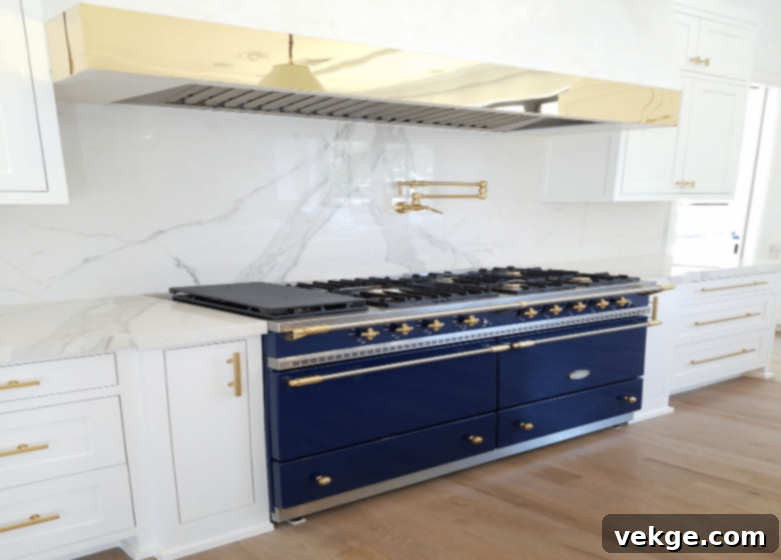
Your cleaning toolkit should include microfibre cloths for streak-free drying and preventing bacterial growth, absorbent wipes for managing dampness, gentle dish soaps for everyday cleaning, non-abrasive sponges to protect delicate surfaces, specialized solutions for eliminating lingering odors, pest deterrent sprays for hygienic storage areas, and paper towels for quick spill management. Selecting the right tools and cleaning agents ensures effective and safe maintenance without damaging the exquisite finishes of your French stove.
Essential Tools and Techniques for Cleaning French Stoves
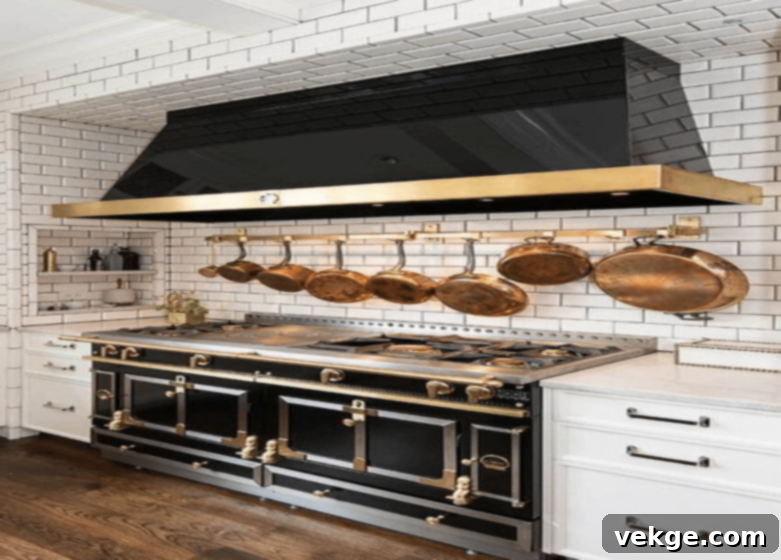
Maintaining Burners and Grates
The burner grates are arguably the most heavily used components of any gas stove, constantly exposed to spills, grease, and food residue. To ensure optimal performance and cleanliness, regularly remove the burner grates. Soak them in a solution of warm water and dish soap for at least 15-20 minutes to loosen baked-on grime. For stubborn stains, a paste of baking soda and a little water can be applied before scrubbing with a non-abrasive brush or sponge. Rinse thoroughly and dry completely with a clean microfibre cloth to prevent rust and ensure even heat distribution during subsequent cooking.
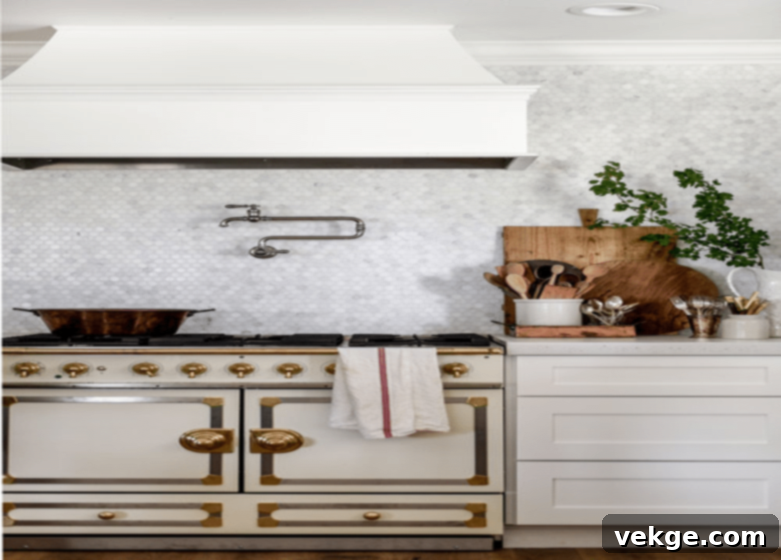
Caring for Burner Drip Pans
Beneath the burner grates lie the burner drip pans, designed to catch spills and debris. These often become coated with grease and food particles, which can affect the burner’s efficiency if not cleaned regularly. After removing the grates, wipe the drip pans with a damp microfibre cloth dipped in a soapy water solution. Immediately follow with a dry paper towel to prevent any excess moisture from seeping into the stove’s internal mechanisms, which could lead to corrosion or electrical issues. For an added streak-free shine, a quick spray and wipe with a glass cleaner like Windex can work wonders, a trick that also applies to your kitchen’s ventilators and windows.
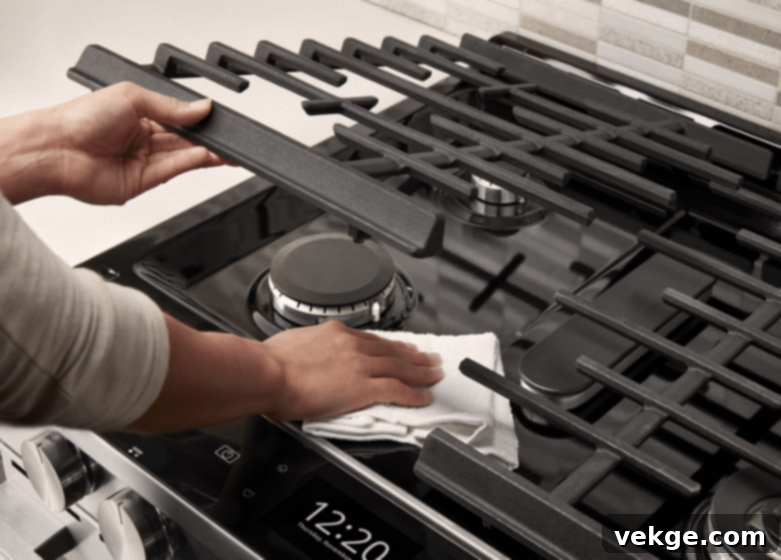
Cleaning Burner Caps
The burner caps, positioned atop the burner grates, are critical for directing the flame and are highly susceptible to grease accumulation. For optimal performance and safety, these caps should be removed and thoroughly cleaned at least once a week. Since they often bear the brunt of cooking splatters, soaking them in warm, soapy water for 15 to 20 minutes is crucial. After soaking and scrubbing off any residue, it’s vital to let them dry completely before reattaching them to prevent dampness around the ignition system. To restore their original luster, especially if they are metal, a high-quality metal polish like MAAS can make them look fresh and new.
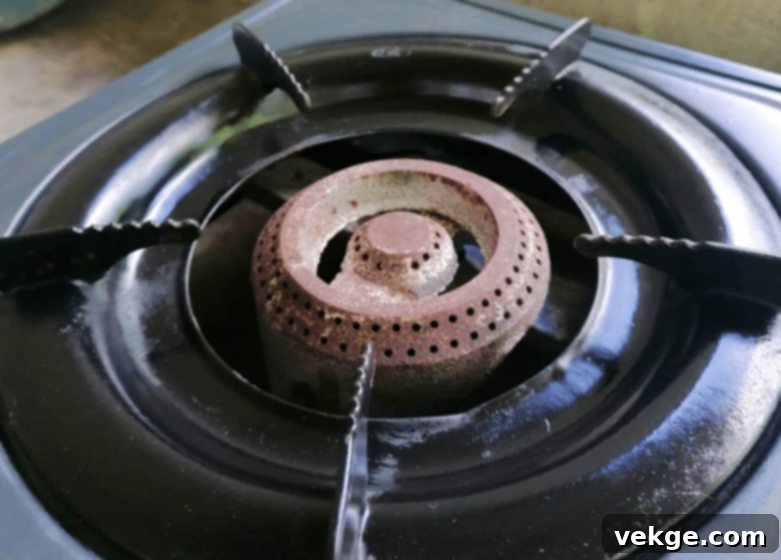
Polishing the Stainless Steel Cooktop
The stainless steel cooktop is a functional centerpiece, often used for food preparation, cutting, and chopping. Over time, this can lead to minor scratches and a dull finish. To restore its smooth texture and brilliant shine, always clean in the direction of the grain. Using a non-abrasive scourer like a Scotch-Brite pad specifically designed for stainless steel, gently rub parallel to the grain. Follow this with a specialized stainless steel polish or a dedicated steel wipe to remove smudges, fingerprints, and leave a protective, gleaming finish. Regular polishing helps to reduce the appearance of minor imperfections and protects against future damage.
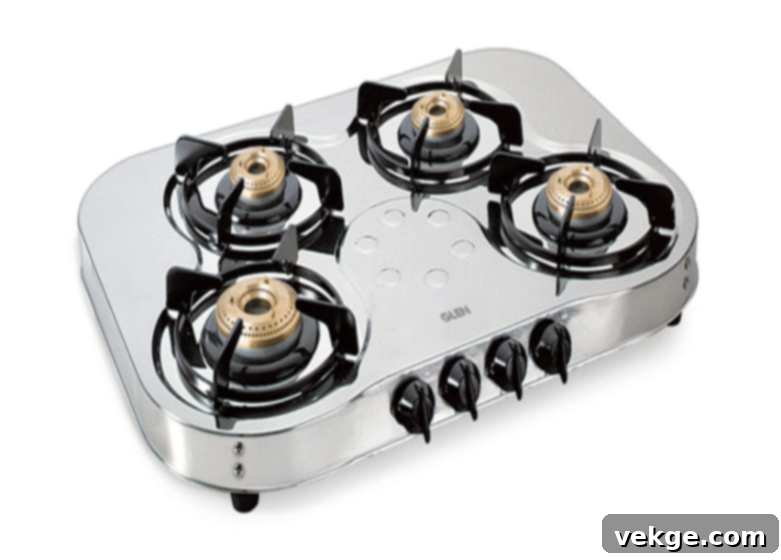
Induction Cooktop Care
Induction cooktops offer rapid and precise heating, but their glass-ceramic surfaces require specific care to prevent scratches and maintain their sleek appearance. While induction hobs themselves don’t require preheating, it’s wise to ensure your cookware is warm and ready for optimal cooking. For cleaning, use specialized glass cooktop cleaners such as Weiman. Immediately after cooking, address any spills or splatters using a soft sponge or microfibre cloth. For stubborn, burned-on food, a plastic scraper designed for glass cooktops can be carefully used at an angle, followed by a cleaner. Avoid abrasive pads or harsh chemicals that can scratch or damage the delicate surface.
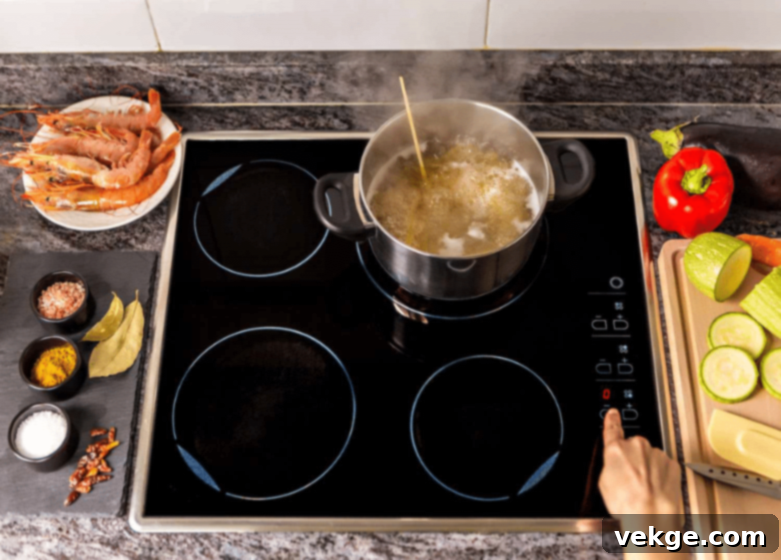
Deep Cleaning the Inbuilt Oven
For inbuilt ovens, rust and accumulated grease pose significant challenges, especially in hard-to-reach areas. Simple wiping with napkins is often insufficient. For a thorough clean, utilize a specialized oven cleaner or a powerful degreasing power dissolver spray. Apply the product generously, allowing it to penetrate deep into the baked-on grime for at least 10 to 15 minutes, or as directed by the manufacturer. Ensure good ventilation during this process. After the dwell time, wipe away the dissolved residue with a damp cloth, rinsing and repeating as necessary until the oven interior is spotless. Don’t forget the oven racks; they can often be soaked in hot soapy water for easier cleaning.
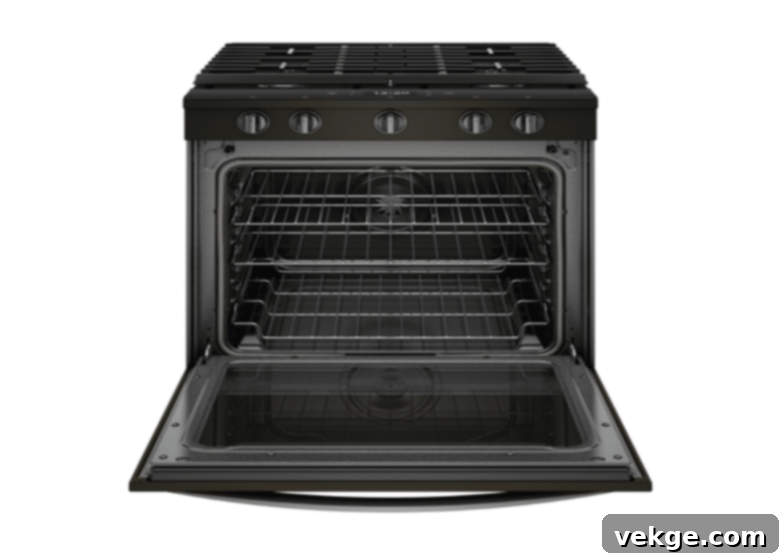
Cleaning the Grill Grates
Grill grates, especially after searing meats or vegetables, can quickly accumulate tough, burned-on food particles and grease. To make cleaning easier, switch on your kitchen ventilators beforehand and set the grill burner to high for a few minutes. Once the grates are warm, but not scorching hot, use a sturdy wire brush to vigorously scrub along the grates, dislodging any stuck-on food and tough grease. For exceptionally stubborn residue, consider using a grill cleaner spray. After cleaning, apply a thin layer of cooking oil to the grates to season them and help prevent rust.
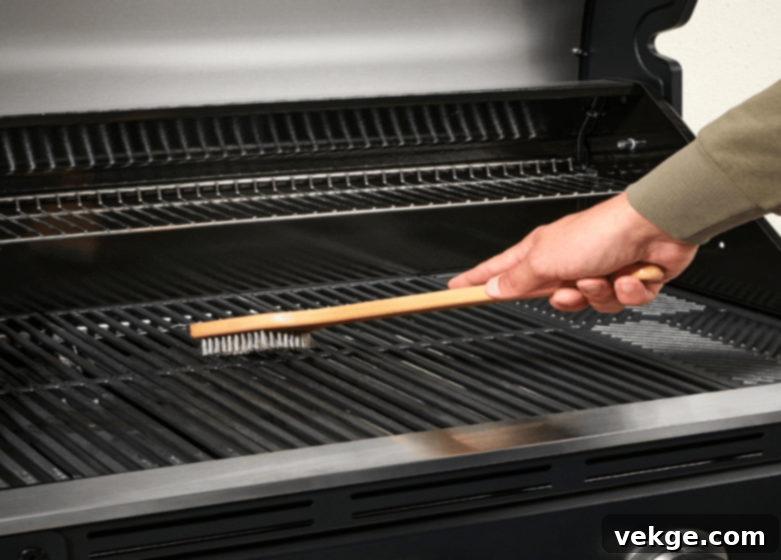
Exterior Panels and Handles
The exterior shutters, panels, and handles are crucial to the aesthetic appeal of your French stove. These often come in various luxurious finishes, such as enamel paint, metal membranes, copper, steel, or brass. To clean grease and fingerprints without damaging the delicate finishes, gently wipe with a damp microfibre cloth. Avoid abrasive cleaners or sponges that could scratch or dull the surface. For metal knobs and handles, particularly those made of brass or copper, periodic polishing with a specialized metal polish like MAAS metal polish can restore their original brilliance and protect against tarnishing. Always ensure the polish is suitable for your specific metal type and follow the manufacturer’s instructions.
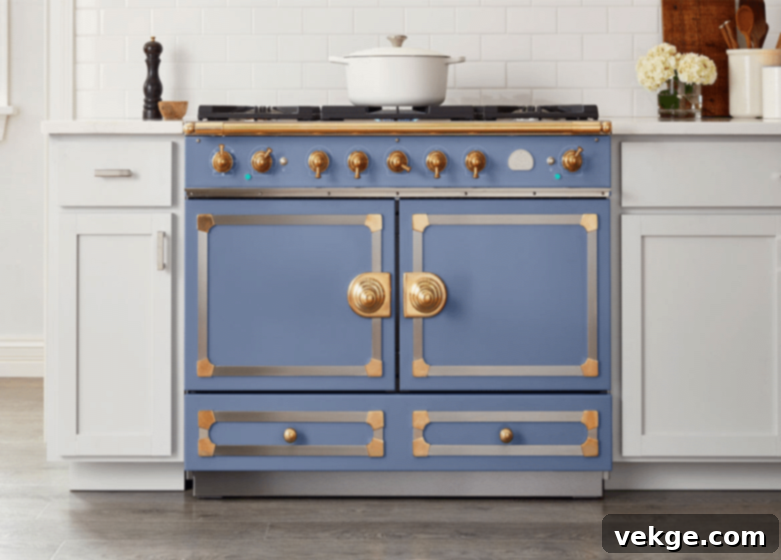
Monthly and Annual Maintenance Checks for Safety and Longevity
Monthly Gas Leak Detection
Beyond routine cleaning, a crucial safety check for gas-based French stoves is a monthly gas leak test. Prepare a solution of dish soap and water, then, with the gas supply to the stove turned off, run a napkin or sponge soaked in this soapy mixture along all visible gas pipes and connections. Turn the gas supply on momentarily and observe carefully. If any bubbles appear on the piping after application, it indicates a potential gas leak. In such a scenario, immediately turn off the gas supply and contact a certified professional or your gas provider to inspect and repair or replace the piping mechanism without delay. This simple test is vital for ensuring the safety of your home and family.
The Importance of Annual Professional Inspections
While the daily and monthly cleaning routines discussed above help maintain the visible and accessible components of your French stove, they cannot address the intricate inner mechanisms. Therefore, it is highly advisable to arrange for a professional inspection and servicing at least once a year. A qualified technician can meticulously check gas lines, electrical connections, oven calibration, door seals, and other critical internal parts that are not easily accessible to the homeowner. This proactive approach helps detect and repair any worn-out parts, potential safety hazards, or efficiency issues in a timely manner, preventing costly breakdowns and ensuring the long-term reliability of your appliance.
When undertaking professional repairs or part replacements, always ensure that the technician uses authentic replacement parts that are compatible with your specific French stove model. Refer to the product manual provided at the time of purchase to confirm the correct specifications. Adhering to manufacturer guidelines for both cleaning products and replacement parts is paramount to preserving your stove’s warranty, functionality, and overall integrity.
Conclusion: A Commitment to Culinary Excellence and Lasting Beauty
Investing in a French stove or range is a testament to your appreciation for quality, design, and culinary excellence. Like any fine investment, it flourishes with dedicated care. The detailed cleaning tools and techniques, coupled with diligent maintenance schedules, will significantly contribute to your appliance’s short-term cleanliness and long-term durability. By adopting a comprehensive maintenance strategy—from daily wipes to annual professional check-ups—you safeguard not only the aesthetic appeal but also the functional heart of your kitchen.
By consistently nurturing your French stove, you ensure that it continues to operate safely and efficiently, providing a healthy and hygienic environment for all your culinary adventures for many years to come. This commitment to care ensures your luxury appliance remains a source of pride and an enduring centerpiece in your home.
